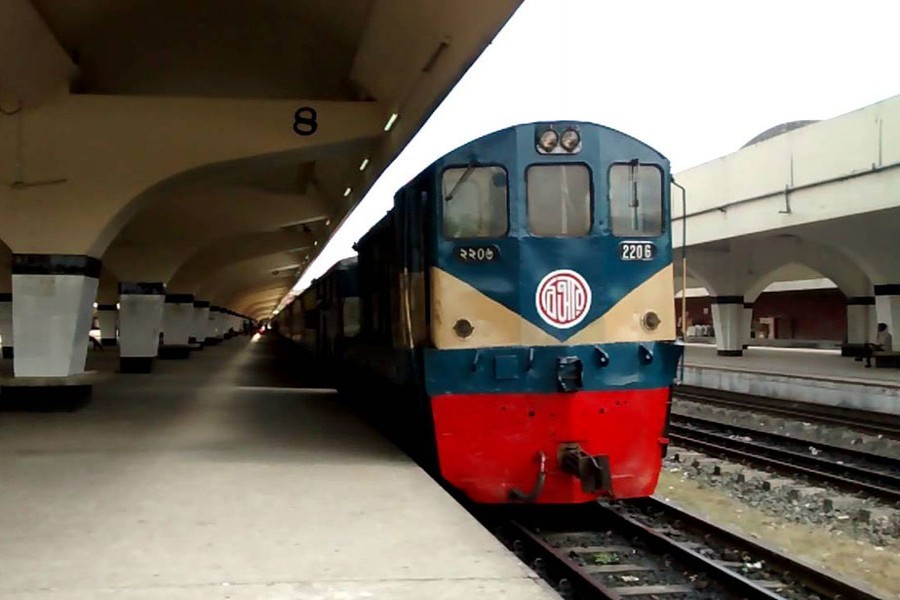
Published :
Updated :

A platform is an integral part of a rail station. It is a solid ground infrastructure alongside a railway track and provides convenient access to and exit from trains. Generally, almost all train stations have some type of platforms. Without a platform, it becomes very difficult and sometime impossible for passengers to get into or get down from a train.
A platform is constructed depending on the type of rail station. There are two or multiple platforms in central, junction and big terminus. Flag, halt and crossing stations have usually one to two platforms.
Though almost all the rail stations in Bangladesh have platforms, a large number of them are not adequate and passenger-friendly. Even some busy halt stations have single-platform facility.
Kamlapur railway station in Dhaka is the largest railway station in the country. Basically a terminal, it is also considered a central station as it connects Narayanganj from its south-end. There are seven main platforms where trains connecting to rest of the country stand. Two more platforms are also there to stop the trains from Narayanganj. Then there is a container depot for loading and unloading containers carrying export-import goods from cargo trains.
Platforms are partially follow-through type in Kamlapur. Passengers can board and alight the train from dedicated platforms. But these are not friendly for passengers boarding and alighting broad-gauge trains. North-Bengal bound intercity and express trains run on broad-gauge rail tracks. The wide compartments are quite high from the existing platforms suitable for meter-gauge trains only. Though there is an option for movable stairs, most of the time passengers don't get the facility. So they have to struggle. Women, children and elderly people face the ultimate challenge.
Usually, the size of rail coaches of broad gauge track is bigger by around 20 per cent than meter gauge. So it can accommodate more people. As the wheels are also bigger compared to meter gauge train, floor height from the ground is almost five feet. So it is almost impossible to board without any suitable platform.
Dhaka Airport station is another important central rail station where two side platforms exist. There are three tracks in between the platforms and if train at middle tack halts there, passengers have to take big risk on boarding and alighting. There is a foot over-bridge connecting two platforms without any ramp facility.
Joydebpur rail station is a busy junction with three platforms. Again these are also not friendly for passengers travelling to broad-gauge trains. Though dual-gauge tracks have been introduced many years back to allow North-Bengal bound trains crossing Bangabandhu Bridge over the river Jamuna, platforms have not been elevated.
Transforming the current platforms into suitable for broad gauge travellers may bring another problem, according to railway authorities. Elevated platforms may put the meter gauge passengers into trouble as passengers may descend from platform to train and other way round. Moreover, broad gauge train requires more width to stop at the platform. It may enhance the gap between the platform and the train causing serious accident.
The Bangladesh Railway has been working to convert all meter gauge lines to dual gauge to accommodate broad gauge trains in the same truck. The ultimately goal is to run broad gauge trains only in the long run. Platforms will be rebuilt accordingly. The snail pace of such an important work, however, compels passengers to suffer for some more years. As an interim arrangement, portable stairs may be placed at different stations to help passengers get in and off.


 For all latest news, follow The Financial Express Google News channel.
For all latest news, follow The Financial Express Google News channel.